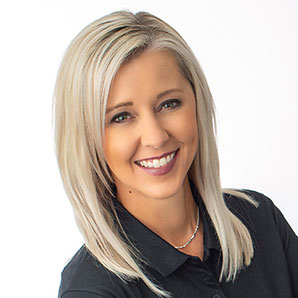
Occipital Fiber Analysis & Soft Tissue Reflex Techniques
The ability to pinpoint the primary source of subluxation patterns is what separates a good chiropractor from a truly exceptional one. With Occipital Fiber Analysis and Soft Tissue Reflex Techniques, you gain access to a powerful indicator system that guides your clinical decisions with unmatched specificity.
This in-depth online course teaches you how to use occipital fibers as neurological indicators to identify stress patterns, organ involvement, and vertebral subluxations—and how to apply soft tissue reflex corrections to release stored tension, enhance spinal stability, and support long-term healing.
These techniques offer a unique lens through which to assess and care for the whole body—making your adjusting more effective, efficient, and neurologically driven.
What You’ll Learn
- How to read and interpret occipital fiber patterns to locate primary subluxations and organ stress
- The neurological basis of soft tissue reflex techniques and their clinical applications
- Step-by-step protocols to evaluate and correct vertebral and visceral patterns
- How to use these tools to complement and enhance SOT® and other chiropractic systems
- Methods to stabilize chronic subluxation patterns and support nervous system regulation.
Resources Provided
- Video class modules
- Evaluation & technique presentations
- Practical demonstrations
- Calls to action (CTAs)
- Complete PDF workbooks
- Full transcriptions of video classes
- Email access to Dr. Rosen & Dr. Watson
Why Take This Course?
- Occipital fibers reveal deep-seated patterns that traditional evaluations may miss
- Soft tissue reflex techniques allow you to address visceral and structural imbalances non-invasively
- These tools help you tailor care to each patient’s unique presentation, improving outcomes and retention
Who Is This Course For?
Chiropractors who want to:
- Sharpen their diagnostic skills with a reliable indicator system
- Address organ and system imbalances without forceful manipulation
- Expand their toolbox with neurologically-based, low-force correction techniques
- Deliver deeper, more lasting results across all patient populations
Whether you’re seeking more clarity in your analysis or more precision in your adjusting, this course will elevate your practice to the next level. It’s time to take the guesswork out of chiropractic care—and replace it with certainty, specificity, and results.
Course Contents
19 Modules | 10 CTAs
Class 1 – Occipital Fiber Analysis and 5 Step Process
Class 2 – Demonstration of 5 Step Process
Class 3 – Occipital Fiber Line 2 – Fiber 1 – T1 – Coronary
Class 4 – Occipital Fiber Line 2 – Fiber 1 – T2 – Myocardial
Class 5 – Occipital Fiber Line 2 – Fiber 1 – T10 – Intestinal
Class 6 – Occipital Fiber Line 2 – Fiber 2 – T3 – Respiratory
Class 7 – Occipital Fiber Line 2 – Fiber 2 – T11-12 – Kidney
Class 8 – Occipital Fiber 2 – Fiber 3 – L1 – Illeocecal
Class 9 – Occipital Fiber Line 2 – Fiber 3 – T4 – Gallbladder
Class 10 – Occipital Fiber Line 2 – Fiber 3 – T5 – Gastric and Hiatal Hernia
Class 11 – Occipital Fiber 2 Fiber 4 – T6 – Pancreas
Class 12 – Occipital Fiber 2 Fiber 4 – L2 – Cecum
Class 13 – Occipital Fiber 2 Fiber 5 – L3 – Glandular Syndrome
Class 14 – Occipital Fiber 2 Fiber 5 – T7 – Spleen/Lymphatic System
Class 15 – Occipital Fiber 2 Fiber 6 – L4 – Colon Syndrome
Class 16 – Occipital Fiber 2 Fiber 6 – T8 – Liver
Class 17 – Occipital Fiber 2 Fiber 7 – L5 – Prostate and Uterus
Class 18 – Occipital Fiber 2 Fiber 7 – T9 – Adrenal Syndrome
Class 19 – Serous Fluid Balancing (CSF) and Cranial Balancing Techniques
Meet the Instructors
As early as first quarter in chiropractic school they were attracted to each other’s commitment to chiropractic and the pursuit of excellence. Their combined 80 years of personal and clinical and teaching experience, in delivering the chiropractic adjustment is unparalleled in the chiropractic profession. Their international outreach through teaching, writing and lecturing has been a driving force in their personal and professional careers since their first seminar taught together as students, in 1979.
Their years of experience have taught them what works and what does not work to create a successful practice and lifestyle. The more competent and comprehensive your expertise you will find that more patients will seek your services and your practice will grow exponentially.









